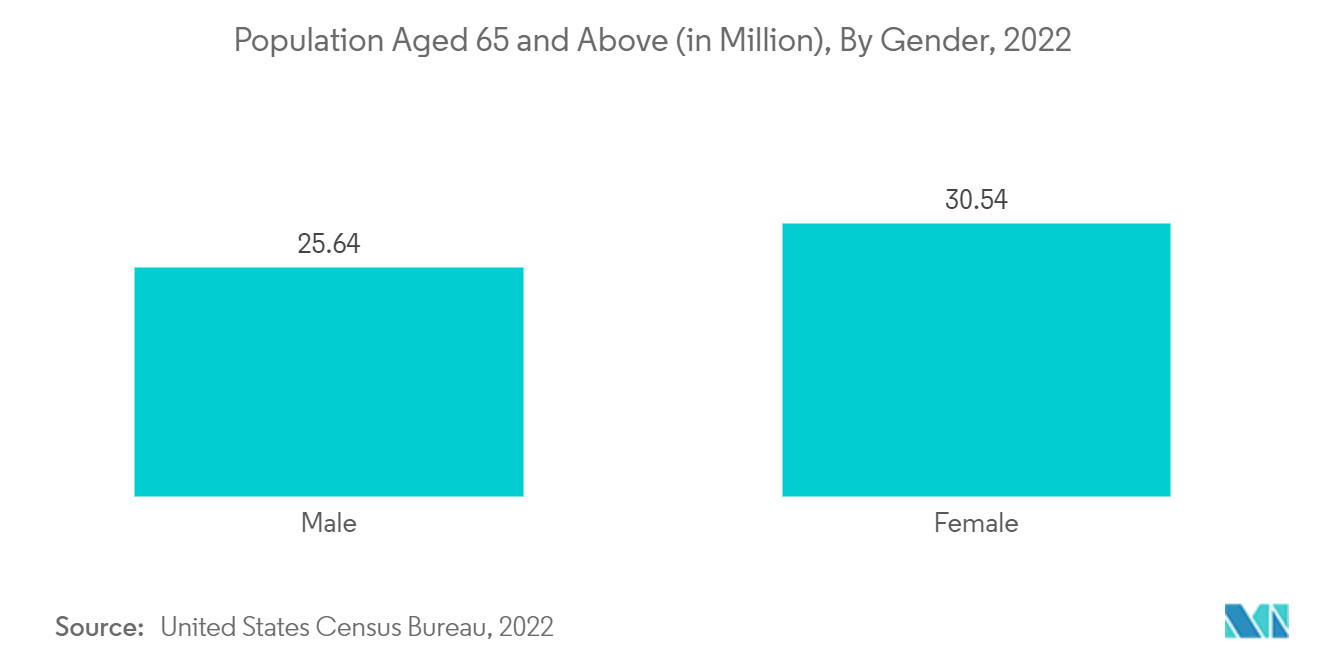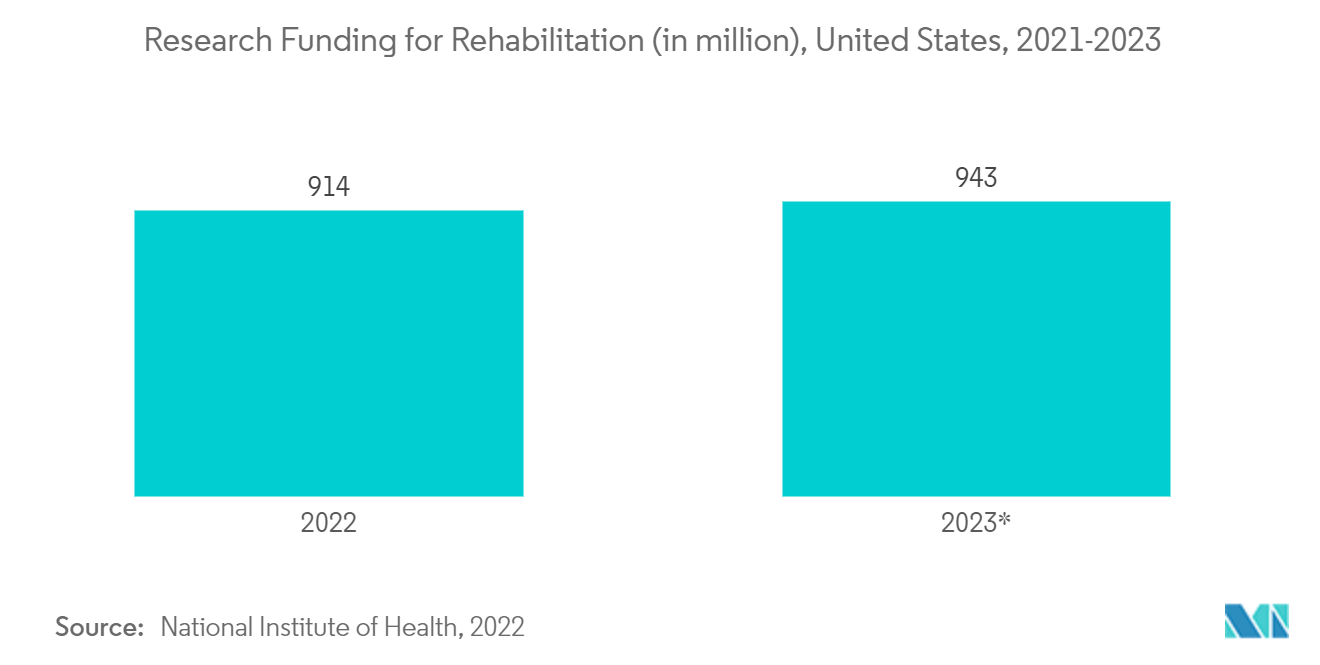Market Trends of US Outpatient Rehabilitation Centers Industry
Geriatric Population Segment is Expected to Hold a Significant Market Share Over the Forecast Period
The geriatric population is expected to have a significant impact on the market studied, as people aged above 65 are more prone to chronic diseases. The population is aging at a much faster rate than in the past. The United States is expected to experience an accelerated rate of aging population as compared to other developed countries. The growth in the aging population leads to an increase in the demand for rehabilitation services since the elderly population is more prone to chronic diseases.
Moreover, the rising prevalence of chronic diseases in the elderly population that require rehabilitation is also expected to enhance segment growth. For instance, according to the data published by the International Diabetes Federation in 2022, an estimated 1,447 thousand people aged 60 years or older were suffering from type-1 diabetes in the United States in 2022.
According to the United States Census Bureau's latest estimates published in January 2023, over 50 million senior citizens live in the United States, making up 16.5% of the total population. Florida has the highest percentage of senior citizens (21%), followed by Maine (20%). Utah has the lowest percentage of senior citizens (10.8%), followed by Alaska (11.1%). California is home to the largest total population of senior citizens (over 5.4 million), followed by Florida (4.2 million). Hence, the growing geriatric population, increasing life expectancy, and associated diseases are projected to boost the demand for constant care for a longer period of time, thereby driving the market growth.

Cognitive Behavioral Therapy Segment is Expected to Hold a Significant Market Share Over the Forecast Period
Cognitive behavioral therapy (CBT) is a very common type of talk therapy, also known as psychotherapy. During this therapy, the patient works with a mental health counselor (psychotherapist or therapist) in a structured way, attending a limited number of sessions. CBT helps the patient become aware of inaccurate or negative thinking so that they can view challenging situations more clearly and respond to them in a more effective way. A person suffering from the following disorders, such as depression, anxiety disorders, phobias, PTSD, sleep disorders, eating disorders, obsessive-compulsive disorder (OCD), and substance use disorders, among others, often seeks out CBT. The increasing prevalence of such disorders in the United States is a major factor driving the growth of the market.
According to the data published by Mental Health America, Inc. in 2022, it is estimated that 19.86% of adults are experiencing a mental illness in the United States, which is equivalent to nearly 50 million Americans. It is also estimated that 4.91% are experiencing a severe mental illness, and the state prevalence of adult mental illness ranges from 16.37% in New Jersey to 26.86% in Utah. Thus, the high prevalence of mental illness in the country is expected to increase the adoption of cognitive behavioral therapy in outpatient rehabilitation centers.
Furthermore, according to an article published by the American Psychological Association in 2021, cognitive behavioral therapy (CBT) is appropriate as an intervention for older people as it is a pragmatic, jargon-free approach that empowers people to manage their problems more effectively through the transmission of coping skills. CBT in older people is an efficacious treatment approach for common mental health disorders. Thus, the rising geriatric population in the country is also expected to boost the growth of the market, as CBT is often used by older people. Moreover, the rising research spending on rehabilitation is also expected to boost the segment growth.
Thus, due to the aforementioned factors, such as the rising research spending on rehabilitation, the rising geriatric population, and the rising prevalence of mental health disorders, the studied segment is expected to experience growth during the forecast period of the study.


